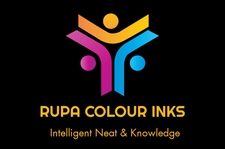UV inks act like liquid plastic. As the ink is exposed to concentrated UV radiation, a chemical reaction takes place during which the photo-initiators cause the ink components to cross-link into a solid. No material is removed so nearly 100% of the delivered volume is used to provide coloration.
Assuming all of the ink transferred from the cells to the substrate, to attain the color density previously attained with water based ink, the anilox roll would have to be specified to delivered about 35% less ink to the substrate. Of course, viscosity will play a key role in determining the percentage of ink to transfer (transfer factor). UV inks do not dry in the air so they do not tend to plug the cells. There in no component that evaporates so there is no need for clean-ups between press runs.
UV inks are typically very thick. Although lower viscosities are available, UV inks generally range from 1000-5000 centipoise (as compared with water based inks in the vicinity of 100 centipoise). It would therefore be reasonable to expect water or solvent inks to more readily transfer from the engraved cells to the substrate (have a higher transfer factor).
Flexographic printing is an evolving process. Through the years, advances in press components have enabled printers to achieve higher levels of quality and visual impact. One of the most notable recent developments is the escalating use of UV inks. Offering significant advantages over water and solvent based inks, UV inks are experiencing explosive growth in the flexographic industry.
As industry demands for visual impact increase, printers seek to add color density while preserving or even enhancing image quality. It is the ability of UV inks to positively impact on color density and image quality, while facilitating improvements in printing efficiency that begins to explain its rising popularity. The other and most significant reason for UV�s growth is concern over environmental issues.
It is important to note that printers are experiencing good results with rolls manufactured to specifications established for water and solvent inks. Existing anilox rolls can be used for printing UV and provide a benchmark for specifying new anilox roll engravings. Transfer factor aside, the significantly thicker consistency of UV ink can benefit the print quality by reducing color bleed and dot gain resulting in sharper images.
UV PRODUCTS
- UV offset inks
- UV letter press ink
- UV marking inks
- UV roll coating inks
- UV flexographic inks
- UV screen printing inks
- UV pad printing inks
- UV protective coatings
- UV decorative coatings
- UV adhesives
- UV curable peelable masks
- UV autoclave inks
- UV cleaners
